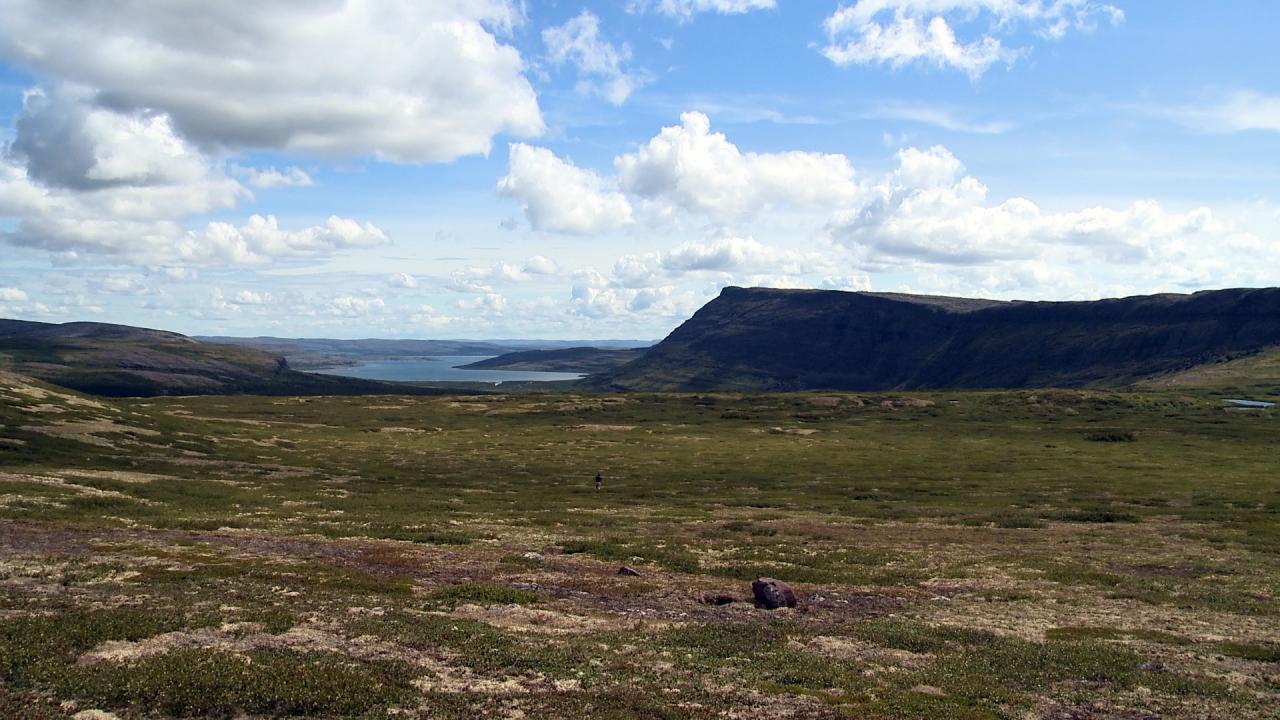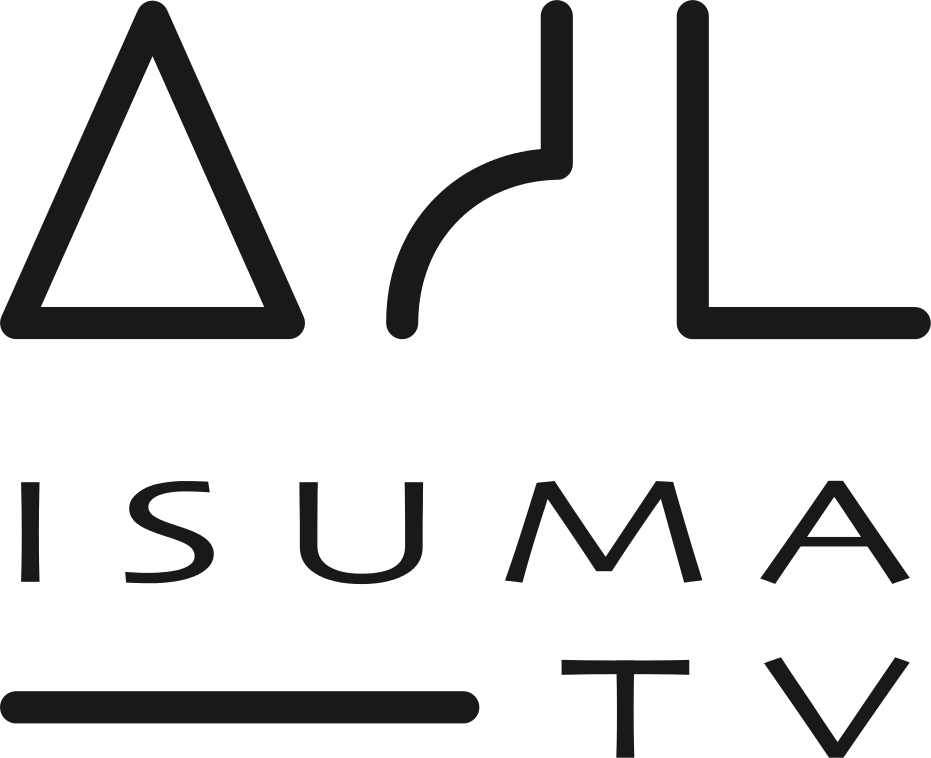
Mary River's final hearings: Iqaluit, day 1
After over ten hours of presentations and discussions, the first day of Mary River’s final hearings closed at 9:30pm, two items behind schedule, with the intimation of many yet unanswered questions to come.
Baffinland president Tom Paddon opened the hearing with a speech, in Inuktitut and English, on the significant, long-term investment that a mine requires, for both the mining company and the impacted communities: “The largest expense, for a mine, takes place earliest on; these are our investment years, and Inuit have a significant investment to make as well. The development of a portion of Inuit land and the changes that will mean for traditional life must be considered carefully.”
But he added, “We are confident that we have had more than enough time to make a decision on the project.”
Paddon said that Inuit traditional knowledge made a significant contribution to the planning of the project, and then flew to Mary River for the rest of the day, handing responsibilities over to his over 20-person team of consultants—“a every expensive room”—to demonstrate the results of that research, supplemented with over six years of Inuit consultation, primary and secondary studies, collaboration with government agencies and regulatory requirements.
“The project may appear unprecedented,” said Erik Madsen, Baffinland’s vice-president of sustainable management, “but you will see that all of the elements of the project have been done before.” Perhaps in response to several government agencies’ concerns in their final submissions to NIRB that Baffinland’s baseline studies were insufficient, Madsen reiterated, “We are confident that we have adequate data for an impact assessment.”
Baffinland pointed out that it has responded to each of the intervenor’s concerns already in writing in a document uploaded to the NIRB ftp site last week.
After a brief overview of the project, the company discussed mostly environmental concerns over three presentations, summarized below:
OPERATIONS—MINE SITE, TOTE ROAD AND RAILWAY:
One key issue identified by NIRB was the possibility of alternatives to the rail route, which Baffinland plans to run southeast of the Mary River site, veer around several lakes and rivers draining into Steensby Inlet and back west to the port site. Two locomotives will make a total of six round trips daily, travelling at average speeds of 30-40 km per hour—about one train every two hours.
Baffinland pointed out that QIA hired an independent consultant to examine the position of the railway and Steensby port site, only to conclude that Baffinland’s choices were indeed the most economically technically feasible choices, despite the fact that the Baffin Land Use Plan will have to be amended to allow to railway to pass through Inuit-owned land. QIA later corrected Baffinland, saying they did no economic studies on alternatives to the port site or railway, but confirmed the results of their feasibility studies.
Baffinland also said airborne dust will not be a significant concern because iron ore dust is much heavier than average rock dust and will fall to the ground almost immediately after flying from the tops of the moving train cars. As for dust emissions landing on the ground and coating ground vegetation, Baffinland plans to monitor dust emissions from rail cars early on in its operations, and said it would extend monitoring down the rail line if the train releases more dust than expected.
In response to NTI’s concerns about emergency plans for train derailment, Baffinland’s director of sustainability Oliver Curran said, “Because it is an enclosed railway with inspectors and heavy equipment stationed at both ends, we can respond to derailments quickly. We have a good emergency response plan.”
SHIPPING AND THE MARINE ENVIRONMENT:
Curran began Baffinland’s second presentation with a general endorsement of shipping: “It’s the most environmentally favourable method of materials transport there is; in Nunavut, a large proportion of community supply comes depends on shipping; it’s strictly regulated and, compared to other methods of transport, it’s environmentally responsible.”
And the only environmentally and technically responsible choice of shipping port, he said, is Steensby. “Shipping experience, scientific technology, traditional knowledge…a $12 million detailed charting of a six mile swath of Steensby Inlet confirmed the navigability of the proposed route.” Baffinland, he said, examined routes west of Milne Inlet to the north, but the east Baffin shear zone—a row of ridges up to 20 m high—precluded them. They plotted a route to Iqaluit but it was too long to make environmental or economic sense. They tried Nuvuit, southeast of Steensby Inlet—and a popular proposed alternative—but the route was longer, would require two additional years of construction, and the port would be much too shallow. By contrast, Steensby met all the technical, environmental and social requirements,“makes an ideal deepwater port,” and has the backing of QIA’s independent consultant. None of the participants had any questions regarding the choice of the Steensby port site.
But Baffinland pointed out it had taken community concerns into consideration in plotting the shipping route itself; the original preferred route, far west of Rowley Island, was moved east to avoid important walrus harvesting grounds along the northeast Melville Peninsula, between Hall Beach and Igloolik.
Baffinland maintained that year-round shipping has no adverse effects on walrus and other marine mammals “where monitoring is efficient and committed,” but said it can adapt its operations, if need be, by reducing shipping speed, altering its route or periodically suspending shipping. When NIRB executive director Ryan Barry asked for clarification on what degree of impacts would trigger suspension of shipping and how long that suspension would last, Baffinland said it would have to make up for the loss in productivity by adding more ships during the open water season, increasing ore transport.
Ballast water, another contentious topic throughout the review process, will be sampled and monitored regularly, as well as filtered to extract potentially invasive, microscopic species. Baffinland will study bottom-feeding animals for baseline studies later this year.
Marine mammals discussions focused largely on the effects of shipping on marine mammals, including noise pollution and ship strikes. Baffinland’s marine mammal consultant Rolph Davis said that, in most cases, underwater noise will have a negligible impact on marine mammals. Unless they’re socializing or distracted, they will most likely get out of the way of ship strikes long before they happen. As for noise pollution affecting the hearing of seals or whales, “they would have to swim beside a ship for a very long time to experience hearing damage from the noise.” Ships generally emit low-frequency sounds, said Davis, and marine mammals hear best at high frequencies.
Davis concluded his presentation with a somewhat depressing comparative study of marine mammal populations’ ability to bounce back from resource extraction operations, to levels close, or equivalent, to their previous abundances.
During question period, QIA president Okalik Eegeesiak pointed out that many of Davis’ studies cited research carried out decades earlier on different species than those that will be impacted by the Mary River project. Davis responded by saying Baffinland is planning more studies on marine mammals abundance, distribution, and reactions to ship traffic and underwater noise, involving hydrophones and unmanned aerial vehicles in the early stages of the project.
Barry challenged Baffinland’s claim that, even though the project, as a whole, may be unprecedented, all of its operational elements have been done before: asked whether Baffinland had compared its shipping impacts with a vessel of similar size instead of the much smaller MV Arctic, Baffinland said, “None in ice-infested waters, there is nothing in the world of that size.”
TERRESTRIAL WILDLIFE AND MIGRATORY BIRDS:
After a short presentation on Baffinland’s plans to replace Mary River’s indigenous vegetation after the mine’s closure (it will work on experimental plots on disturbed areas to determine re-vegetation success throughout the project), discussions turned to the most contentious issue of the night: potential impacts on the enigmatic North Baffin caribou herd.
Most of Baffinland’s information comes from traditional knowledge on historical caribou populations and migration patterns, since there are almost no systematic western scientific data available. Baffinland consultant Mike Setterington also flew along the proposed rail route for three full days, logging thousands of kilometers, and walked the route twice, searching for caribou tracks. Though the current population is sparse—Setterington estimates it to be in the hundreds—in abundant periods, there were thousands—maybe even tens of thousands—travelling through Mary River in the 1980s. Baffinland has plotted its caribou crossings to align with old tracks left over from decades before, but no one knows what the herd will look like when it eventually does return in full force to the area, or how sensitive it will be to railway disturbance when it does.
Based on evidence from the Meadowbank gold mine in Baker Lake, the Ekati and Diavik diamond mines outside of Yellowknife, caribou are tremendously adaptable and simply avoid areas of high traffic. That said, given the low population of caribou in the North Baffin herd, Baffinland promised to investigate any caribou strikes and suspend railway transport in the meantime. For now, Baffinland is relying on the ghostly trails of a herd that no one knows for sure what has happened to. NIRB chair Elizabeth Copland asked some unanswerable questions: “Has there always been a low population? Where is the caribou now?” Before looking at her watch, saving the answer for the community roundtable discussions and closing the night.

















